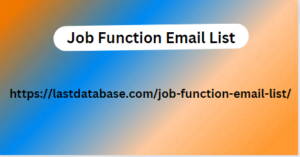Post by account_disabled on Mar 6, 2024 1:19:29 GMT -5
The risks change and your responses to them have their own effect. may reduce the likelihood of the client paying late making it less important to deal with. Or you may take on so many other clients that Corp. accounts for a smaller share of your revenue so the impact of late payment is smaller. All of this needs to be accounted for. Theres no hard and fast rule about how often to update your risk management plan. Large companies have whole departments dedicated to fulltime risk management whereas in a small company the resources you can devote to it will probably be more limited. The key is to make a commitment to update your plan regularly whether thats on a monthly basis.
Quarterly or even annually. One of the best approaches is to make small changes to individual items on an ongoing basis as the changes occur Job Function Email List and then to carry out a more comprehensive review of the document on a less frequent but still regular schedule. The comprehensive review would include going back to the steps we covered in the earlier parts of this series brainstorming about all the risks your business is subject to adding new items to the list and ranking them by importance. Then do the same with your existing risks noting any changes. Advertisement Next Steps.

If you take all of the steps outlined in this tutorial and the earlier parts of the series youll be in a good position to protect your business from many of the pitfalls that will come your way. You now have a comprehensive risk management plan that outlines all the risks your business faces and ranks them according to how likely they are to occur and how serious their impact would be. Youve evaluated the effectiveness of the controls you currently have in place and come up with an action plan for either avoiding reducing transferring.
Quarterly or even annually. One of the best approaches is to make small changes to individual items on an ongoing basis as the changes occur Job Function Email List and then to carry out a more comprehensive review of the document on a less frequent but still regular schedule. The comprehensive review would include going back to the steps we covered in the earlier parts of this series brainstorming about all the risks your business is subject to adding new items to the list and ranking them by importance. Then do the same with your existing risks noting any changes. Advertisement Next Steps.

If you take all of the steps outlined in this tutorial and the earlier parts of the series youll be in a good position to protect your business from many of the pitfalls that will come your way. You now have a comprehensive risk management plan that outlines all the risks your business faces and ranks them according to how likely they are to occur and how serious their impact would be. Youve evaluated the effectiveness of the controls you currently have in place and come up with an action plan for either avoiding reducing transferring.
